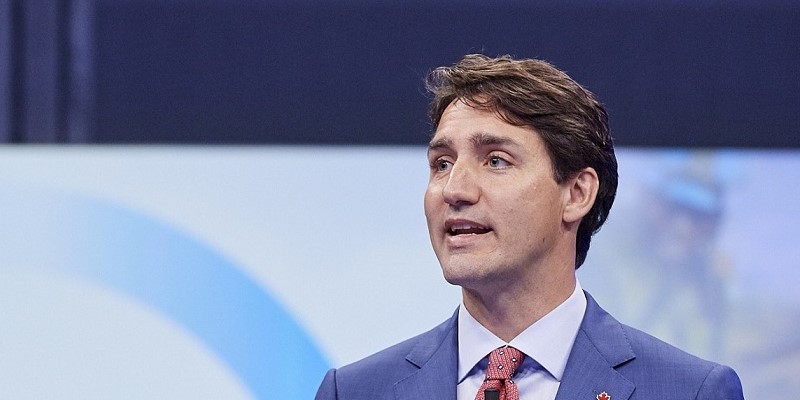Spending on the party faithful, no doubt

Federal government maintains high levels of spending and abandons fiscal anchor
The Trudeau government released its fall
economic statement on Tuesday, which updates taxing, spending and borrowing estimates provided in this year’s budget plan. While the government didn’t increase overall spending this year from
spring budget estimates, federal spending remains at substantial levels and the government continues to argue there’s nothing wrong with its fiscal approach.
Prime Minister Trudeau has recorded the
five highest levels of per-person spending (2018 to 2022, inflation-adjusted) in Canadian history and is on track to add a sixth year to his record. Federal program spending (total expenditures minus debt interest costs) will reach a forecasted $449.8 billion this year, which represents a nominal increase of 75.5 per cent compared to when the Trudeau government first took office. This represents $11,395 per person in aggregate spending expected for 2023/24—higher than spending during the 2009 recession and both World Wars (adjusted for inflation).
The federal government will borrow to fund its spending, resulting in a projected budgetary deficit of $40.0 billion this year, and future spending is on the rise. Spending from 2024 to 2027 is now projected to be $30.7 billion higher than previous forecasts, with that increase funded entirely by debt. Moreover, there’s no plan to return to balanced budgets at any point in the fiscal plan.
Moreover, spending estimates in the fall update are most likely an understatement. The Parliamentary Budget Officer (PBO) released a
report suggesting that federal subsidies for electric vehicle battery manufacturing, which the government initially estimated would cost $37.7 billion, now have a $43.6 billion price tag. The Trudeau government will also likely soon table legislation for a national pharmacare program, which the PBO
expects to add $11.2 billion to annual spending in 2024/25.
The Trudeau government seems committed to racking up high spending bills year after year, despite
warnings from Bank of Canada Governor Tiff Macklem that “government spending is starting to get in the way of getting inflation back to target.” By continually increasing or maintaining high levels of spending, the Trudeau government is helping fuel inflation and contributing to the affordability issues facing Canadians.
Given the Trudeau government’s propensity to spend more than it has in revenue, gross debt (total liabilities) is also on the rise. Gross debt is now estimated to be $2.0 trillion for 2023/24—an increase of $721.6 billion since the pandemic began. And debt interest costs have surged higher than previously forecasted to reach $46.5 billion for 2023/24. This represents more than 10 per cent of federal revenue, which violates the
maximum percentage recommended to the government by David Dodge, former Bank of Canada governor.
Moreover, the government has largely abandoned its fiscal anchor of declining its debt relative to the size of the economy. Federal debt is forecasted to rise as a share of GDP in both 2023 and 2024. Finance Minister Chrystia Freeland is now committing to only decrease debt-to-GDP after 2024/25 and decrease the deficit as a share of the economy next year. But as weak as these commitments are, the government has repeatedly
abandoned its own previous fiscal anchors, so it’s difficult to believe it will stick to the new plan. Without having a proper fiscal anchor, there’s nothing guiding the direction of spending and borrowing.
Despite all of this, Prime Minister Trudeau
claims his government has “always exercised fiscal restraint.” Though the government did recently
find $500 million in departmental savings for 2023/24, with the lion’s share coming from the Department of National Defence, this is a drop in the bucket compared to the $449.8 billion it plans for program spending this year. Furthermore, in direct response to Prime Minister Trudeau’s claim, the PBO’s Yves Giroux
spoke on the government’s track record, explaining that “even outside of pandemic spending, there has always been steady increases in government spending” essentially saying the government hasn’t demonstrated fiscal restraint.
So, what has all this spending and debt brought us?
Living standards are dropping in Canada. Based on estimates presented in the fall economic update, gross domestic product (GDP) per person—a broad measure of living standards—is 3.1 per cent lower today than it was last year (adjusted for inflation), and is expected to fall even further in 2024.
Not only are Canadians today feeling the burden of the Trudeau government’s high levels of spending, but future generations will bear the burden of repaying all the debt that’s been accumulated. Future generations will be on the hook for paying off this debt, and the resulting interest costs, likely through higher taxes.
As part of Tuesday’s fall economic update, the federal government has once again abandoned its fiscal anchor and maintained high levels of spending. Such levels of government spending and debt place a significant burden on both current and future Canadians.
Projected federal spending from 2024 to 2027 is now $30.7 billion higher than previous forecasts.

www.fraserinstitute.org




